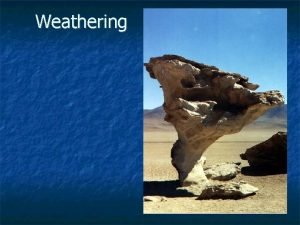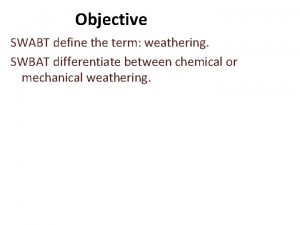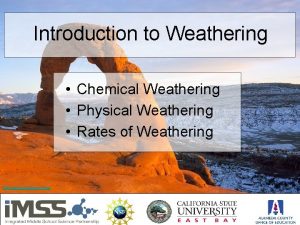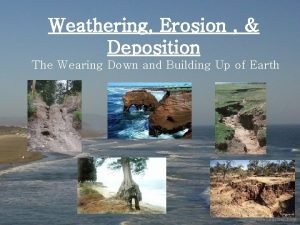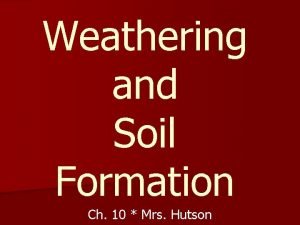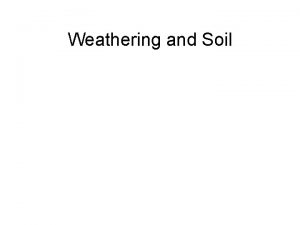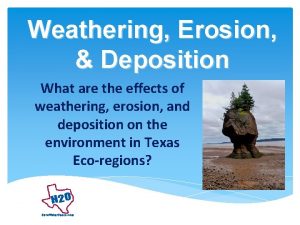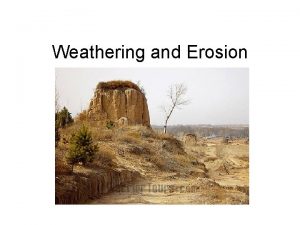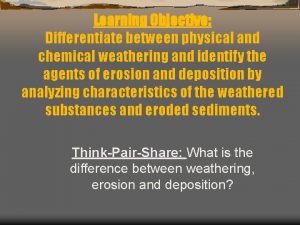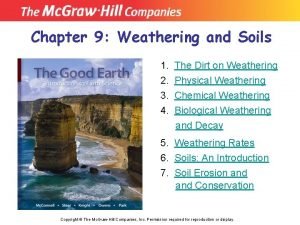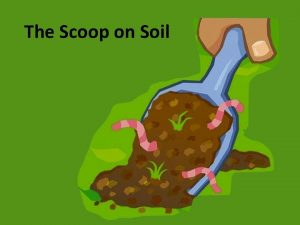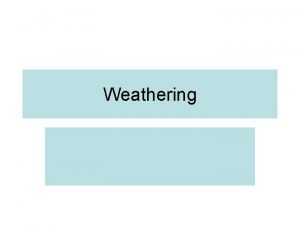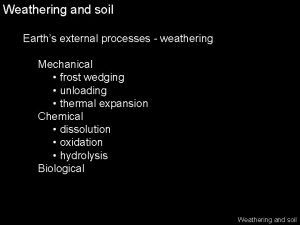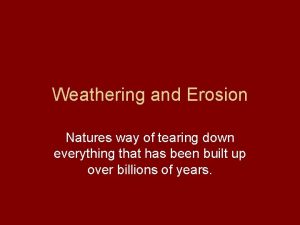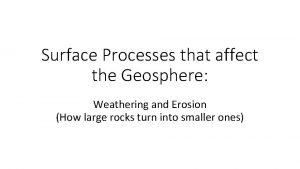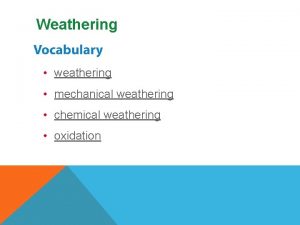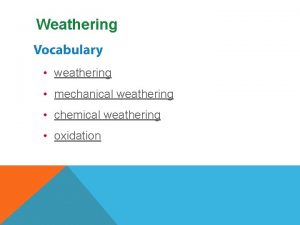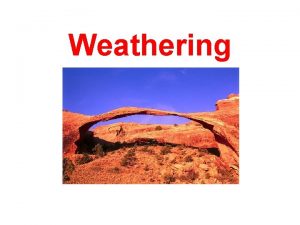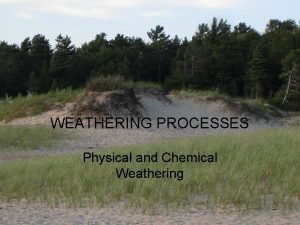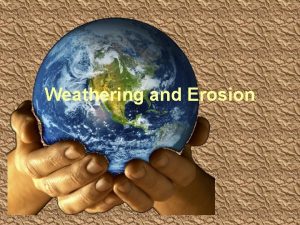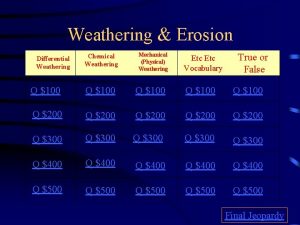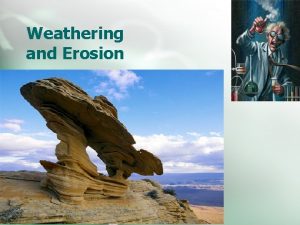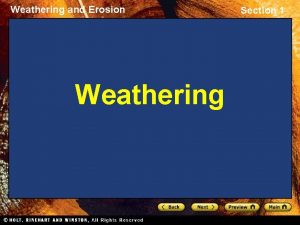Mineral Weathering and Secondary Mineral Formation weathering chemical

















- Slides: 17

Mineral Weathering and Secondary Mineral Formation weathering: chemical alteration of minerals (in soils, involves water, gases, acids, etc). Parent material soil Desilication via weathering Parent Material=primary silicates formed from igneous/metamorphic processes Soil= secondary silicates, oxides, carbonates, etc. formed from weathering processes

Behavior of Elements During Chemical Weathering • Soils are depleted in elements relative to parent material • Element loss/depletion is determined by elements position on periodic table (which column or group of columns) AND the element’s ionic potential Z/R = ionic potential z=charge, r=radius Classes: Z/R= 0 -3 ion surrounded by H 2 O shell, soluble in H 2 O (Na, Ca, etc) Z/R=3 -~9. 5 ion so strongly attracts H 2 O that insoluble oxides/hydroxides form (Al, Fe) Z/R=>~9. 5 soluble oxyanions form (S, C, etc. )


Ionic potential of important elements • Red arrow indicates decreasing attaction to H 2 O within a group of elements • Decreasing attraction is reflected in weathering losses…. .

Element loss varies with ionic potential Ti group Alkali metals and alkaline earths

Mineral Particle Size and Mineralogy Gravel > 2 mm (primary) Sand >= 0. 05 to 2. 0 (primary) Silt <0. 05 to 0. 002 (primary + secondary) Clay < 0. 002 (secondary) Most secondary mineral are silicates, and most secondary silicates are phyllosilicates.



1: 1 phyllosilicates: kaolinite • One layer of Si tetrahedra • One layer of Al octahedra • Individual minerals are held to another via H bonds

2: 1 Phyllosilicates: di and trioctahedral Dioctahedral (smectites) • Substitution of +2 for +3 in octahedral layer (called isomorphous substitution) • Creates a net negative charge (and property of cation exchange capacity) • Results in expandable layers Trioctahedral (vermiculite) • Substitution of +3 for +4 in tetrahedral layer • Also has CEC, but little or no expansion

Other secondary mineral groups: oxides Al oxides (gibbsite) • Results of vigorous chemical weathering (desilication)

Non-silicate secondary minerals: oxides Fe oxides 1. Geothite • Yellowish brown • Acidic, OM-rich envir. 2. Hematite • Bright red • Warm, dry environments

Non-silicate secondary minerals: carbonates Calcite • Ca is released from some weathering source • Forms in arid to semiarid environments when soil solution becomes saturated • Presence in upper 1 m related to MAP • Depth of carbonate layer related to MAP

Geographical distribution related to climate • Greater than 100 cm/yr removes carbonate • Below 100 cm, depth~MAP

Non-silicates: sulfates (gypsum) • Presence of sulfates in soils usually occurs in hyperarid climates (or sites with high water table and evaporative enrichment of salts)

Secondary Minerals in California Soils: Sierra Nevada

Soil Mineralogy vs. Elevation
 Types of chemical weathering
Types of chemical weathering Kinds of weathering
Kinds of weathering Chemical weathering examples
Chemical weathering examples Compare and contrast mechanical and chemical weathering
Compare and contrast mechanical and chemical weathering Compare and contrast mechanical and chemical weathering
Compare and contrast mechanical and chemical weathering Venn diagram of chemical and mechanical weathering
Venn diagram of chemical and mechanical weathering Three types of weathering
Three types of weathering Weathering erosion
Weathering erosion Mechanical and chemical weathering venn diagram
Mechanical and chemical weathering venn diagram Water erosion
Water erosion Mechanical and chemical weathering venn diagram
Mechanical and chemical weathering venn diagram The scoop on soil
The scoop on soil Mechanical and chemical digestion venn diagram
Mechanical and chemical digestion venn diagram Causes of weathering
Causes of weathering Example of mechanical weathering
Example of mechanical weathering Venn diagram of mechanical and chemical weathering
Venn diagram of mechanical and chemical weathering Chemical and mechanical weathering venn diagram
Chemical and mechanical weathering venn diagram Mechanical and chemical weathering
Mechanical and chemical weathering
